 |
||||||||||||||||||||||||
|
|
||||||||||||||||||||||||
 |
||||||||||||||||||||||||
 |
||||||||||||||||||||||||
|
||||||||||||||||||||||||
 |
 |
|
For a printer-friendly version of this article, click here. |
|
MFR |
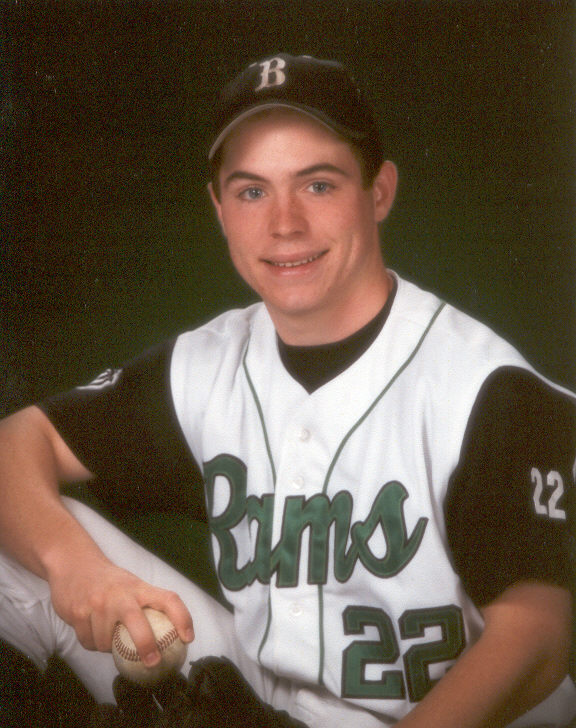 |
|
Back in the summer of 1997, when 13-year Ross Worden of Richardson hurt his left arm sliding into home during a baseball game, his parents Ken and Debbie Worden assumed it was just another minor sports injury that would take care of itself. But it didn't. Over the coming months, Ross's pain came and went, then began to intensify. Debbie took her son to his pediatrician, who performed an external exam, could find nothing wrong with Ross, and referred the boy to an orthopedic surgeon for further attention. His news was not good. The orthopedist said X-rays showed that Ross's pain was caused by the ulna, which had grown longer than the radius next to it. The doctor proposed to remove a half-inch or so from the forearm bone, then reattach the bone with screws and a metal plate, which would be removed in about six months time. He said that the procedure was not uncommon, although he usually performed it on older teens. Debbie had misgivings. "I asked, 'If you cut the ulna and the radius keeps growing, won't there be problems?' The doctor said Ross had pretty much achieved his growth. I said, 'Huh? He's 14.'" When two more orthopedists concurred in the diagnosis and recommended the same surgery, the Wordens were in a serious quandary. Ross was in constant pain, which had spread to his right arm. Advil and Velcro braces weren't helping much. Yet the operation—which the doctor now advised for both of the boy's arms—still seemed a radical and potentially dangerous solution to what had begun as a simple sports injury. Then one day, Debbie mentioned the Wordens' dilemma to Frankie Burget, a Bedford-based occupational therapist. Burget is expert in a little-known therapy called myo-fascial release (MFR), with which she'd given Worden significant relief from fibromyalgia, a chronic and painful neuro-muscular condition. "Maybe I could take a look at Ross," Burget suggested. Encouraged by Burget's success with her fibromyalgia, Debbie decided to give it a try. "It couldn't hurt," she remembers saying. "I knew her techniques were gentle, and non-invasive." Burget worked on Ross for about an hour, carefully stretching and pulling the soft tissues between the numerous small bones of his left wrist and forearm. "We could hear bones popping and other kinds of noises," says Debbie. "Ross didn't feel any pain from it, but by his expression I could tell that Frankie was getting to some meaningful places." Her son showed almost immediate improvement. After a second session with Burget, Ross took off his braces. Since his third and last treatment some weeks later, the Berkner High School junior has been completely pain free, is back to playing baseball and hopes to make the varsity nine this spring.
|
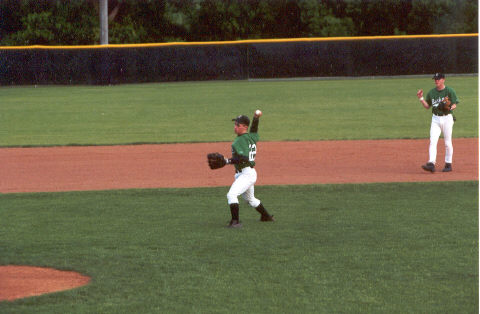 |
|
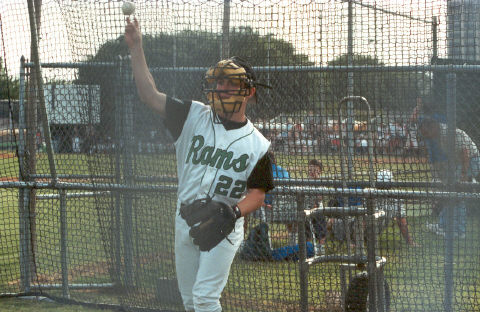 |
|
|
The key to Ross's full recovery, says Burget, lay with his fascia, the whitish, unremarkable-looking tissue that is ubiquitous within the human body. "I could see he had limited range in his wrist, and could feel that the tissue there was inflamed," she says. "The fascia between his wrist bones was bound down, so I used what we call mobilization techniques to release it." Mainstream medical science recognizes that human fascia functions as a sort of flexible interior skeleton—without it, your body would crumple into a shapeless lump of flesh and bone. But MFR therapists (most of them trained by John Barnes, MFR's leading light and guru, who is headquartered in Pennsylvania) picture the fascia as a dynamic, three-dimensional system that plays an integral role in human health. Disease, stress or trauma (such as Ross's slide) can cause the fascia to misalign, lock or "stick" as Burget sometimes puts it. This in turn distorts adjacent tissues such as muscle, internal organs, blood vessels, bone and nerves. A whole range of conditions may ensue, from digestive disorders to headaches. To restore fascial harmony, MFR therapists manually work the tissue through the skin, slowly pulling and stroking the tough stuff until it unsnarls, or unsticks, as if it were a tangled wad of Velcro. MFR involves no drugs, no diets, no instruments or machinery or secret knowledge, other than the specially-developed skills of the therapist. "It's a good example of a mechanical treatment for mechanical problems," says Dr. J.D. Gonzalez, an ear nose and throat specialist and plastic surgeon who frequently refers patients to Burget for conditions such as TMJ, temporo-mandibular joint disease.
|
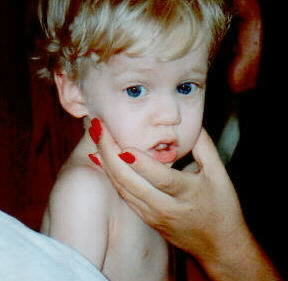 |
|
Dr. Gonzalez, who suffers considerable back and neck pain himself, also receives MFR therapy from Burget. "I think it is uniquely helpful," he says. Most of Burget's clients are adults, but she treats a lot of kids, as well. "They're a little bit different," she says, "because they're less likely to have chronic problems, and they are less defensive about what's wrong. "I take a team approach to working with them. I listen to their parents, and to the kids, and I also watch them closely. You can tell a lot by their body language." Bethany Eversol, for example, had a very obvious problem. After a 30-hour labor, Bethany was born sideways, with her neck twisted down on her left shoulder. The doctor told Bethany's parents, Kathy and John Eversol, not to worry. "He kept telling us it would just go away," Kathy recalls. But the torticollis, as it is called, persisted, and afflicted Bethany in a variety of ways. She was slow to develop, had no apparent sense of her left side and made few sounds. She didn't seem to be in any pain. But at age one the infant could not hold anything in her left hand, nor pull herself up, or climb. Kathy's mother, a massage therapist, finally suggested her daughter try MFR with Bethany. Kathy was skeptical, yet also desperate. She contacted the MFR hotline in search of a qualified therapist. "Frankie," she says, "happened to be the only one in this area." Burget listened as Kathy Eversol explained Bethany's condition, and then went to work on the child's neck. "Bethany screamed through the entire thing," Kathy recalls, "but she also showed improvement almost immediately. She started using her left hand the next day." MFR therapists are taught that symptoms and their causes frequently occur in separate places. Two years ago, for example, a Dallas couple asked Burget to look at their 15-month-old son, Christopher, who was dragging his turned-in left foot. Christopher couldn't walk unless he had something to push against. Carla, his mother, was herself an occupational therapist familiar with John Barnes' theories. She sought out Burget for help. The therapist quickly diagnosed Christopher's problem as an internally-rotated left hip, and began once-a-week sessions in which she gradually freed the bound fascia around Christopher hip. According to his mother, the child responded quickly and has had no problems since.
|
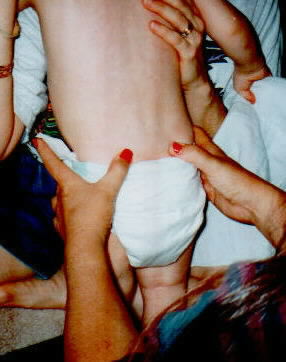 |
|||
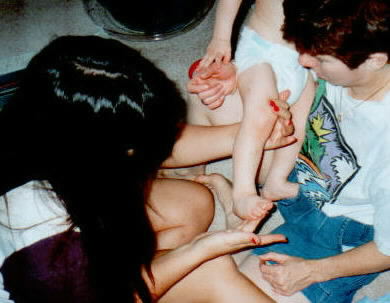 |
|||
|
Burget is quick to point out that MFR, while effective for a wide range of differing conditions, is no magical panacea. "It's really a logical way of looking at the body," she says. "What we do makes sense." It certainly has to her younger patients' grateful parents. "We can't keep up with Christopher anymore," his mother reports. "My husband Mark and I say a special Frankie prayer every time we watch him riding down the sidewalk on his bike, or chasing and running and jumping." ( Reprinted with permission from Dallas Child Magazine, February 2001 ) |
| [Home] [PF MFR Child] |
|
This website last updated on 31 July 2010 This website is entirely funded by Windsong Therapy and Wellness, Inc. |
|
Disclaimer: Confidentiality of data relating to individual patients and visitors, including their identity, is respected by this Web site. The owners of this Web site undertake to honor or exceed the legal requirements of medical / health information privacy that apply in Texas and the United States. The information on this Web site is Copyright © 1999-2008 Windsong Therapy and Wellness, Inc. Please obtain permission from Windsong Therapy and Wellness, Inc. before reproducing any information from this Web site. |